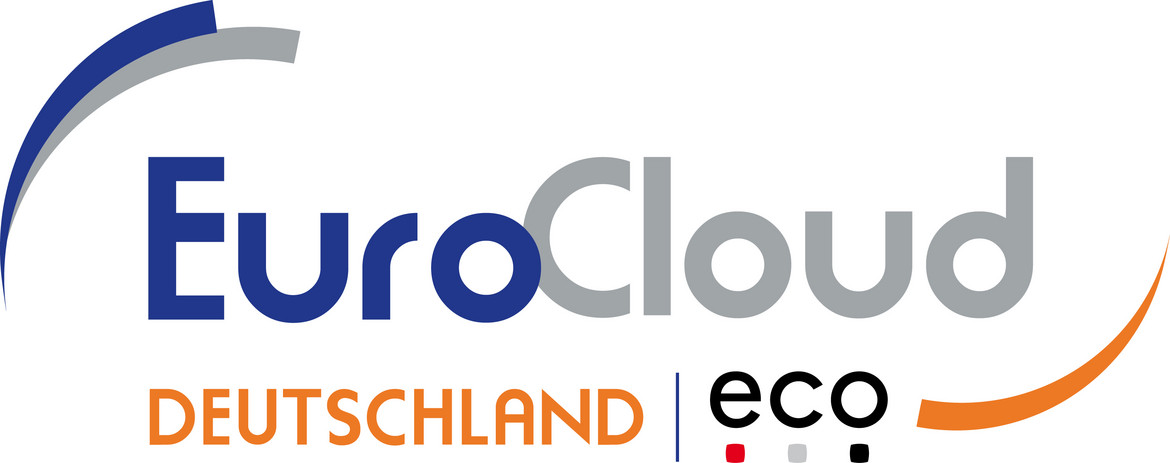The 7 Challenges Facing Cloud Native Service Providers
Cloud native start-ups are usually too small to have their voices featured in major projects and heard by hyperscalers. EuroCloud wants to change that, explain Dr. Nils Kaufmann and Thomas Noglik.

© Bulat Silvia | istockphoto.com
Cloud natives: A new type of IT service provider is helping customers to digitalize their businesses in the public cloud. In light of the overall lack of cloud experts, small to medium-sized enterprises and DAX corporations are already availing of cloud natives’ know-how. But start-ups are usually too small to have their voices featured in major projects and heard by hyperscalers. EuroCloud wants to change that.
German economy following the cloud mainstream
200 billion dollars in assets. Once again, the cloud has broken a record. This is just how rich it has made one of its founders. While the bulk of revenues from Jeff Bezos’ company Amazon comes from online commerce, for 14 years now, it has generated the most profit by renting out its computer networks to business customers. Such figures demonstrate: The cloud is now a multi-billion dollar global business. According to Gartner market observers, global revenues from public cloud services will have reached 227 billion dollars in 2019. “We have come to the point where adopting the cloud has become part of the mainstream,” says Sid Nag, Research Vice President at Gartner.
Also in Germany. Here, public cloud revenues will amount to 13.7 billion Euro in 2020, as estimated by the management consultancy Arthur D. Little and the eco Association in their study “The Internet Industry in Germany 2020-2025”. According to the Cloud Monitor 2020 of KPMG and Bitkom, in Germany, three-quarters of companies with more than 20 employees are already using the public cloud. Cloud computing is state-of-the-art in the German economy, write the study’s authors. A recently published IDC survey showed that 46 percent of companies in Germany with more than 100 employees are already at an advanced phase in their cloud implementation. That wasn’t always the way things were.
In the early years, companies in Germany still distrusted the cloud. They were worried about issues of protection for business-critical and personal data by public clouds of the US providers Amazon, Google, and Microsoft, in particular. But now, according to the Cloud Monitor, 38 percent of German companies use public cloud services, and another 30 percent are planning to use them. They already spend a fifth of their entire IT budget on this. In the same survey, 77 percent of those surveyed see the public cloud as the backbone of digitalization. Klaus Bürg, AWS Managing Director DACH, spoke at the HSP Summit on 27 September 2020 about a total volume for partners of over 30 billion Euro; although, at present, only about 3 billion are actually being roped in – so there’s apparently a lot of room for improvement for the ecosystem.
The success of the public cloud is changing the service provider landscape
Market researchers at Crisp Research see the innovative power of the hyperscaler as the reason for this change of heart. The most significant progress is taking place on the major public cloud platforms. In their 2018 cloud market comparison, Crisp rates the public cloud as the platform of choice for cloud native workloads and data-based business models.
But the tempo of the hyperscaler is taking its toll. Many companies, but also the majority of traditional IT service providers, lack cloud experts who can keep up with the pace. Every week, the major platforms release dozens of services and updates. Keeping on top of their complexity in day-to-day operations is impossible for most IT employees and consultants. As a result, 61 percent of German companies report on problems with public cloud integration – an increase of almost ten percent compared to the previous year. The hyperscalers themselves do not aim to – and indeed cannot – help here. They merely provide the technology. Even the giants from Silicon Valley do not have the resources to coach every corporation or SME on how to enter the cloud.
A remedy is being provided by a new class of IT service providers: Managed Public Cloud and Managed Kubernetes & Container Service Providers. What’s special about them: their specialization. The business model of these cloud natives is based exclusively on infrastructures and technologies from the public cloud. No data centers of their own, no technical legacy. Their customers include not only SMEs, but also Dax corporations. Their knowledge is in demand throughout the economy.
Underdogs with a key role
Cloud native service providers thus play a key role: they act as the link between the major technology suppliers from Silicon Valley – and, in future, China – and the bulk of traditional companies. They are the intermediaries who are developing the potential of the public cloud for the economy.
In Germany in particular, cloud natives are still young and small companies with fewer than a hundred employees. None have been on the market for more than ten years. Many of them are start-ups. Accordingly, they are also struggling with the typical challenges of this development phase. What’s more, specific market conditions are currently preventing cloud natives from developing their full potential for digital transformation in Germany.
EuroCloud has identified seven challenges that it wants to address with its dedicated initiative for cloud natives.
1. Insufficient understanding of “cloud native”
Many companies still see the cloud as essentially constituting the same technology as is available in their own server rooms. Only bigger, more high-performance. That’s not completely off the mark. After all, the term “hyperscaler” already embodies the concept of economies of scale. But public clouds have long been about more than just server infrastructure – they’re also about creating value from data. On their platforms, customers not only obtain computing power and storage space, but above all software services for mass data analysis, artificial intelligence, or applications for the Internet of Things.
This is also where the term “cloud native” originated: Google, Amazon, and Microsoft are changing the way software is structured. Instead of programming programs as monoliths and running them on selected servers, hyperscalers divide their services into many subtasks, so-called microservices. Each service only performs a single task, but is highly automated, highly scalable, and unrivaled in terms of efficiency. Cloud native applications make optimal use of cloud resources, because each small program draws just as much computing power from the data cloud as it currently needs. So an ecosystem is growing for the next generation of business applications in the public cloud, all of which consist of the same components. Business applications based on microservices can therefore also exchange data more easily. New value chains, such as those in connected industrial production, are much easier to establish.
When applied to the IT services market, cloud natives have a better understanding of what the public cloud is all about. They have moved away from the problems of data center operations because their services start at the levels beyond the infrastructure. They not only help their customers to operate business software in the public cloud, but also to acquire, network, share, and analyze data, and to use it to open up new business areas. With their in-depth knowledge of the cloud ecosystems, they confidently make use of the microservice libraries of Amazon, Microsoft, and Google, orchestrate cloud services from the various hyperscalers, and keep their customers informed about the innovations that the major platforms release almost on a daily basis.
Their problem: getting their knowledge out there, especially among small and medium-sized enterprises, because there are still far too few of them. In addition, when questions on public cloud topics crop up, SMEs usually turn to their previous IT service providers, because they’re unfamiliar with the provider market. However, providers’ understanding of the public cloud is usually just as far removed as that of the customer themselves.
2. Demand far exceeding supply
More than every fifth company in Germany has already established technologies from the public cloud, and another 40 percent intend to follow suit, according to the German “Cloud Native 2020” survey by IDG and Deloitte. This is reflected in high growth expectations: By 2025, revenues from the public cloud in Germany are expected to grow by 30 percent each year. Infrastructure, platform, and software services from the public cloud will therefore be the fastest growing segment in the German Internet industry, as predicted in the eco study “The Internet Industry in Germany”.
SMEs in particular are seeking external support within this dynamic field: Back in 2018, 71 percent of SMEs stated in the German Crisp survey “Managed Cloud Innovation” that they wanted to outsource operational responsibility for their public cloud environment to specialists such as managed public cloud providers. So, seven out of ten SMEs.
Another study by Crisp shows how much this demand exceeds the current supply of cloud native specialists: the 71 percent of SMEs have only the option of getting support from just a few dozen providers. In the last market comparison in 2018, Crisp counted just 26 providers for Managed Kubernetes & Container Services and 17 Managed Public Cloud Providers – for the whole of Germany!
3. Low visibility and no common awareness as an independent industry
The market is so large that there is no real competition among the cloud natives. Every offer is instantly snapped up. But without competition, an awareness of an independent industry cannot emerge. Nor do customers perceive the scattered “exotics” as representing a new and highly relevant movement in the service provider field. The cloud native message, which is fundamental to the digitalization of the economy, is restricted to insiders.
4. Low influence on digitalization projects
As individual 10-person companies without their own interest representation or industry platform, start-ups naturally find it difficult to exert a significant influence on the direction of larger IT projects – especially since major customers tend to use several cloud natives for partial tasks. The general contractor, on the other hand, is the conventional IT service provider or system vendor, who usually has a lower level of overview and solution competence when it comes to the use of hyperscaler technology. Especially in pioneering fields such as Industry 4.0, cloud natives are hence not able to tap into important value-added networks of the established economy.
This also applies to politics. Initiatives such as the European cloud ecosystem GAIA-X or the new EU Data Strategy for a Digital Single Market require the specialist expertise of the cloud natives. But they must combine their voices to make themselves heard.
5. Low resonance with hyperscalers
This resonance is missing even at the source of their business, the hyperscalers. Only a few founders from the German cloud native scene have direct access to the local decision makers of the major platforms. Their license volume and resource consumption is well below that of the established IT service providers, who consequently enjoy preferred partner status. So even with the hyperscalers, the cloud natives remain below their potential.
6. No common quality standards
What should serve as an important means for expressing the distinctive added-value of the cloud native industry is its own quality standards. Criteria catalogs for provider audits and certifications make it easier for potential customers to select providers and for trust to be generated. At the same time, standards are also indispensable for communication work in order to convey a differentiating and nuanced knowledge of the potential of cloud native services in the market. For example, ISO 27001 certification is an absolute must-have for many tenders. But that being said, the issue of such a credential represents an insurmountable obstacle for most cloud natives. The same applies to C5 and others.
7. No industry platform for cloud natives
All of these challenges ultimately lead to one prerequisite: The cloud native service providers need their own platform in Germany to give them both a stage and a common voice.
As a specialized association and lobby for the German and European cloud industry, EuroCloud wants to create such a platform with the EuroCloud Native (ECN) initiative. To this end, the association offers cloud natives the right network to meet both decision-makers from the major hyperscalers, as well as potential customers. In addition, EuroCloud, as part of the eco – Association of the Internet Industry, also creates the framework which, until now, has been lacking for cloud natives: to network with each other and develop a common industry awareness. And last but not least, members of EuroCloud Native can effectively contribute their expertise in the working groups of initiatives such as GAIA-X and directly help shape the conditions for the Digital Single Market in Europe.
EuroCloud also supports the new cloud specialists in day-to-day business. As young companies, they are struggling with the typical challenges of start-ups: in addition to access and reach, they must master steep learning curves. EuroCloud helps with regulations and compliance, certification, product development, and the exchange of best practices. The association’s experience with industry-wide certifications will pave the way for its own cloud native quality standards in Germany. In addition to interest representation, the program includes consultation and workshops, roundtables, and networking events.
Who can participate in EuroCloud Native?
EuroCloud Native is the interest group for providers of public cloud services. The members’ business models must be based on public cloud infrastructures. These include, for example, software developers, micro-service specialists, managed services providers, consulting firms, and training providers. Members can nominate a representative for election to the advisory board. Companies are also invited to support the initiative as sponsors, irrespective of membership.
This is why we need a cloud native industry in Germany
The German economy is very distinctive in international comparison – countless world market leaders from the provinces, small compared to large corporations, but legendary and unrivalled in their focus and expertise. An economy with such specialists cannot be transformed with standard formulas. What is needed are service providers who are just as specialized and who understand their customers’ industry and business. This is precisely the direction in which the cloud natives in Germany are currently moving: small and medium-sized service providers who are drilling their way deep into the market instead of positioning themselves as generalists.
Specialists exist for mass data analysis, artificial intelligence, Internet of Things, or managed services. We need new small and medium-sized companies that digitalize the growing SME market! With the Cloud Native Initiative, we want to pave the way for a highly specialized and industry-oriented cloud economy in Germany.
Dr. Nils Kaufmann is Managing Director of the cloud startup Innovations-ON, Co-Founder of cloudbuddies, and a founder of the Cloud Native initiative. Based on his experience in the German cloud market, Kaufmann, together with EuroCloud, wants to strengthen networking among cloud native providers and create more visibility in Germany.
Thomas Noglik is a EuroCloud Board Member and Managing Director of Cloud Mates. With his many years of industry expertise, Noglik is particularly involved in strengthening the association work in the “Managed Services and Cloud Provider” segment.
Please note: The opinions expressed in Industry Insights published by dotmagazine are the author’s own and do not reflect the view of the publisher, eco – Association of the Internet Industry.






